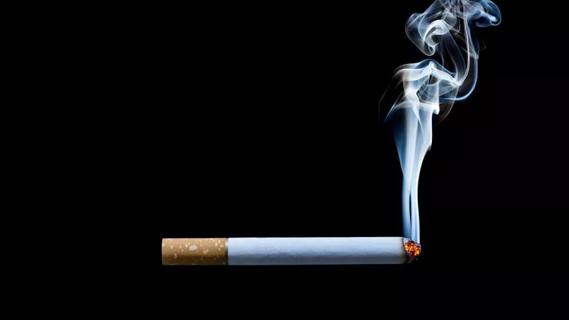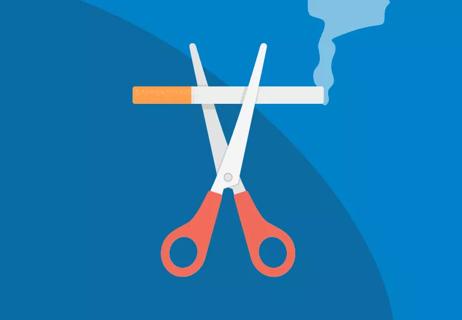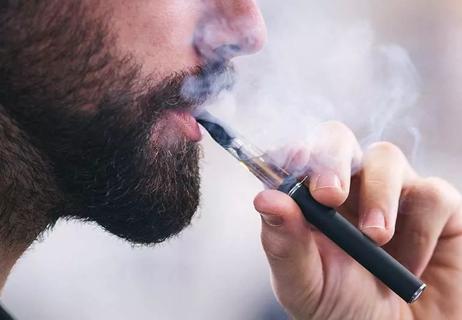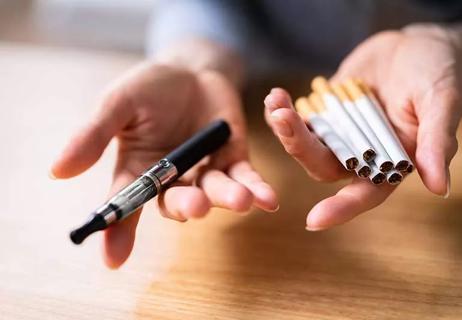When it comes to tobacco use, there is no such thing as ‘safe’

You might think smokeless tobacco is safer than inhaled alternatives. But at least 28 cancer-causing toxins have been found in smokeless tobacco. According to the Centers for Disease Control, 5.9 million American adults use smokeless tobacco.
Advertisement
Cleveland Clinic is a non-profit academic medical center. Advertising on our site helps support our mission. We do not endorse non-Cleveland Clinic products or services. Policy
Smokeless tobacco is not burned. Most people chew or suck the tobacco in their mouth and spit the juices that accumulate in saliva. Chewing tobacco — loose or in pouches — twisted rope, snuff, and powdered tobacco are the most common forms.
“Because users set the chewing tobacco in the same place of their mouth every time, that’s where we’ll typically find visual signs of tobacco use,” says Eric Lamarre, MD, and specialist for head & neck surgery and oncology.
“The best way to avoid oral cancer as a result of smokeless tobacco is to never use it,” Dr. Lamarre says, “but if you notice sores or bleeding on the cheek or gums, that’s when you know you have a problem.”
Research shows a link from specific ingredients in smokeless tobacco to oral cancer. According to the U.S. National Cancer Institute, the culprit is a nitrosamine compound, or cancer-causing agent, known as (S)-NNN. Nitrosamines are found in all tobacco products, but smokeless tobacco has very high levels.
Absorbing cancer-causing toxins into oral tissues and blood stream from the use of smokeless tobacco is proven to result in mouth, tongue, throat and esophageal cancer, but that’s not all.“In addition to the increased oral cancer risk, it can irritate and destroy gum tissue,” says Dr. Lamarre.
Advertisement
“Regular smokeless tobacco users risk tooth decay, gum disease, and bone loss. In severe cases it can result in tooth loss.”
Smokeless tobacco can have many adverse effects on your body, including cancer. Cancer begins when your cells grow out of control. Cells in almost any part of your body can become cancerous. Here are just a few types of adverse effects caused by smokeless tobacco:
Smokeless tobacco has many ill effects that aren’t health-related too, such as cost. With a can of dip running about $6 a can, this can really add up over a year’s time.
Smokeless tobacco still presents deadly consequences. Advertisers promote smokeless products as “safe.” Smokers often try to quit by turning to chewing tobacco for a nicotine fix. Smokeless tobacco is more socially acceptable too because it doesn’t cause secondhand smoke exposure.
What most people don’t know is that an average dose of nicotine in smokeless tobacco is 3.6–4.5 mg, compared to 1–2 mg for cigarettes.
“All forms of tobacco contain nicotine,” Dr. Lamarre says. “Because of the pleasant feelings nicotine provides tobacco users, those addicted tend to use more, decreasing the likelihood that the person will quit altogether.”
Emerging products in the U.S., including snus (dissolvable tobacco), electronic nicotine delivery systems (“e-cigs”), and waterpipes (hookah), continue to gain popularity in group social settings.
These options are promoted as safe and permissible alternatives to real tobacco. Dissolvable options eliminate spitting. E-cigs tout they’re better because they’re smokeless. Sounds like a healthy option, right?
Advertisement
Wrong. Research in the Journal of Environmental and Public Health shows that the use of snus, e-cigs and hookah can have negative effects on individuals who have never used tobacco in their life. And e-cigs are becoming banned in more and more settings.
“These types of products lure individuals into using real tobacco,” Dr. Lamarre says.
Once someone uses these products on a regular basis and they’re exposed to nicotine, they’re more likely to begin – or continue – smoking.“It’s a slippery slope,” Dr. Lamarre says. “Your best option is to quit, and your doctors can provide help in getting there.”
Advertisement
Learn more about our editorial process.
Advertisement

Nicotine replacement products and relaxation techniques can help you ditch the dip

Even only a couple cigarettes a day can lead to potentially deadly lung diseases like COPD and emphysema

Resolve to move a little more, drink a little less, eat a little healthier, sleep a little better and destress a lot

Health benefits start within 20 minutes and continue to grow for years after

Each comes with substantial health risks and should be avoided

Smoking and vaping deplete oxygen-rich blood that you need for endurance and fitness

Toxic chemicals stay on surfaces long after smoke clears

Type 2 diabetes isn’t inevitable with these dietary changes

Applying a hot or cold compress can help with pain